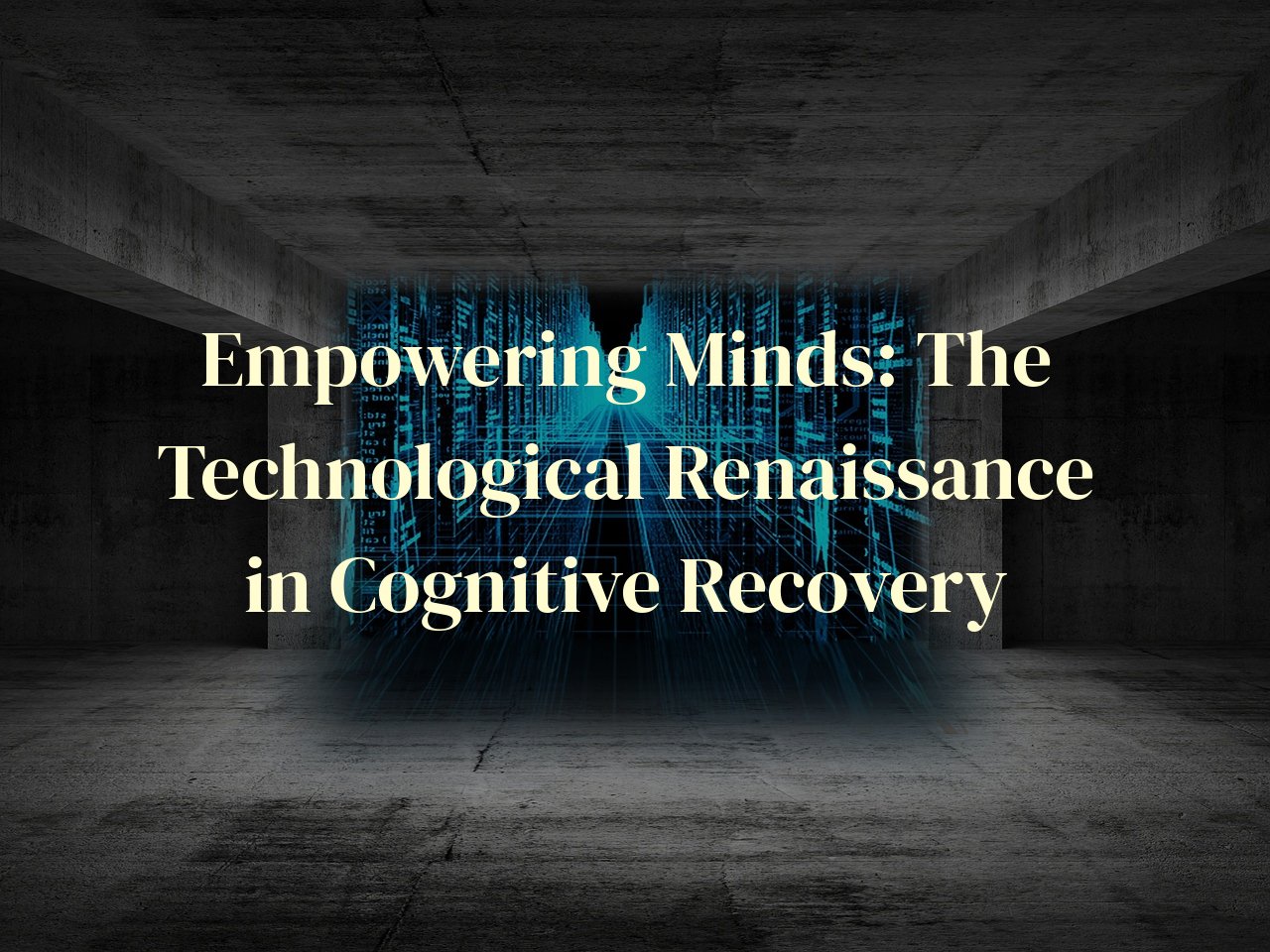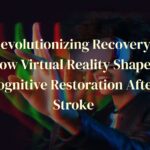
In a world where technology and medicine intersect to create groundbreaking therapeutic approaches, cognitive rehabilitation has welcomed a new ally: virtual reality (VR). This blog post delves into the transformative power of VR in the realm of cognitive therapy, unpacking its potential to revolutionize treatment paradigms. As we navigate these virtual landscapes, we’ll explore how they contribute to the mending of cognitive functions, and perhaps even marvel at the ingenuity of human innovation. By journeying through this post, readers will gain insights into the ways VR is altering the future of cognitive rehabilitation and how this revolutionary tool can offer hope to those in recovery.
Table of Contents
Decoding Virtual Reality: A Revolutionary Tool for the Mind
The realm of virtual reality (VR) extends far beyond the glitzy veneer of gaming and entertainment, morphing into a powerful instrument for cognitive recovery and mental expansion. My journey into the transformative world of VR began during a conference on neuroplasticity, where the palpable buzz around VR’s potential for cognitive rehabilitation opened my eyes to its revolutionary impact on minds striving to heal and grow.
Imagine slipping into a VR headset and being transported into a meticulously crafted environment designed not just to simulate reality, but to actively rehabilitate the brain. That’s exactly what happened to John—an individual I encountered whose recovery from a stroke was significantly accelerated by VR interventions. Rather than simply moving game pieces on a board, he was navigating virtual landscapes, challenging his mind and body in a symphony of stimulation that traditional therapies could not replicate.
From enhancing spatial awareness to improving memory recall, the spectrum of cognitive competencies targeted by VR is broad and varied. Take, for example, the memory palace technique—an ancient mnemonic strategy given new life within the boundless realms of virtual space. Patients like Sarah, who once struggled with debilitating memory impairment, now use VR to construct and traverse their own palaces of memory, reinforcing neural pathways with every virtual step taken.
Furthermore, VR’s immersive environments supply more than mere visual and auditory stimuli—they are interactive ecosystems that respond to a user’s actions, requiring decision-making, problem-solving, and adaptive thinking. These dynamic settings engage the prefrontal cortex, responsible for executive functions, alongside networks involved in attention and perception, essentially ‘exercising’ the brain in a well-rounded cognitive workout.
The gravitas of this technology does not escape me as a health expert and advocate for advanced rehabilitation methods. Melding the pure potential of VR with the intricate workings of the human mind, we find ourselves on the cusp of a cognitive revolution. As I dive deeper into the intersections of tech and mental rejuvenation, the trajectory of virtual reality in cognitive health care seems not only promising but essential. It is a tool that doesn’t just replicate life—it enhances, enriches, and empowers the convalescent journey, leaving me in awe at the profound possibilities it unfolds for individuals seeking cognitive resurgence.
Case Studies: Triumphant Tales of VR-Enhanced Cognitive Rehabilitation
In the tapestry of cognitive recovery, virtual reality (VR) occupies a vital thread. I’ve had the opportunity to witness firsthand how VR propels individuals through their recovery journey in ways traditional methods had not. One remarkable case is that of Sarah, a stroke survivor. Her therapy involved navigating virtual supermarkets, something she found both enjoyable and challenging. The progression in her cognitive abilities, particularly memory and executive functioning, was awe-inspiring. Sarah’s ability to plan and sequence complex tasks improved significantly, a testament to VR’s immersive influence.
Another case was Michael, a veteran dealing with traumatic brain injury (TBI). Through the lens of VR, Michael engaged in various scenarios to enhance his attention and problem-solving skills. The flexibility of virtual environments allowed his therapy to be tailored specifically to his needs, which vastly improved his multisensory processing and concentration. VR was not merely a tool for Michael’s recovery; it was a gateway to regaining a life of autonomy and confidence.
Then there was Emily, a young woman grappling with the cognitive aftereffects of chemotherapy. For her, VR provided a safe haven for cognitive practice. She worked on her speed of processing information and visual-spatial awareness in a VR park that changed with the seasons. It was not just rehabilitation; it was a re-engagement with life. Emily found joy in the VR tasks, fostering a positive emotional state that complemented her cognitive gains. Her resilience paralleled the real-world improvements, making her experience with VR nothing short of a rebirth.
These narratives are just a few droplets in the sea of success stories where VR-driven cognitive rehabilitation has marked a turning point. The engagement and specificity VR offers to individuals recovering from various cognitive impairments are reshaping what we can expect from cognitive rehabilitation outcomes. Accessibility, adaptability, and personalization are the cornerstones of VR in cognitive health, as seen in these cases. Such stories forge the path for VR’s potential to not just rehabilitate but to empower minds enduring the most strenuous cognitive challenges.
As a blogger and an observer in this field, capturing these stories has been humbling and paradigm-shifting. The crossroads of technology and rehabilitation mark the emergence of a new era where cognitive recovery is no longer bounded by the limitations of the physical world. VR stands as a beacon of hope for cognitive resilience and renaissance, with each successful case reinforcing the belief that we are just scratching the surface of what VR can achieve in cognitive rehabilitation.
Behind the Scenes: How VR Engages the Cognitive Process
Delving into the world of Virtual Reality (VR) and its impact on cognitive rehabilitation, it’s essential to understand how it works its magic on the human brain. My fascination with this subject comes from a blend of personal and professional intrigue, having witnessed remarkable transformations in patients who have engaged with VR therapy.
VR’s primary impact lies in its immersive nature, which creates an environment for cognitive challenges and growth. By simulating real-life scenarios, VR takes advantage of the brain’s plasticity, allowing patients to practice and strengthen cognitive functions in a controlled, yet dynamic setting. It is this replication of real-world complexity within a safe environment that makes VR such a powerful rehabilitative tool.
Furthermore, VR can superbly target specific cognitive domains, such as attention, memory, and problem-solving. I have observed how custom-designed VR applications aid in the training of divided attention, for example, by placing the individual in a busy virtual street where they must navigate while simultaneously responding to various stimuli. The ability to adjust the difficulty and nature of these tasks enables individuals to progress at their own pace, a feature critical for both motivation and efficacy in cognitive recovery.
One cannot overlook how VR aides in the creation of neurobiological changes through enriched environments and neurofeedback. Patients receive real-time feedback on their performance, linking positive outcomes to neuroplasticity. This feedback not only fosters an adaptive learning process but also serves as a motivational tool, reinforcing the brain’s reward systems and bolstering the will to continue with the often arduous journey of rehabilitation.
The role of VR in cognitive rehabilitation is akin to a skilled conductor leading an orchestra; it harmonizes various brain functions, creating a symphony of cognitive activity that might have once been disrupted. It is this orchestration that I have passionately watched reshape lives, allowing individuals to reclaim independence and, in many cases, surpass their pre-illness cognitive capabilities. The horizon is bright and abuzz with potential, and as a professional ensconced in this field, I remain eager to witness and partake in the advancements VR promises to bring to cognitive health.
Breaking Barriers: VR’s Accessibility and User Adaptation
The realm of virtual reality (VR) in cognitive health is a frontier characterized by its profound ability to shatter the conventional confines of therapy. In my professional journey, I’ve witnessed firsthand how this innovative medium transcends physical limitations and elevates the spirit of inclusivity in treatment. VR’s growing reach is a testament to technological democratization, making cutting-edge cognitive rehabilitation accessible to a broader swath of individuals who once faced formidable barriers to such resources.
One doesn’t need to look far to see the tangible impact of VR on individuals with mobility impairments. By enveloping them in a digital scape that challenges the mind while sparing the body, VR facilitates cognitive exercises that were once tethered to the physical equipments of a clinical setting. Moreover, this technology pioneers an adjustable environment where pace and complexity mold to the user’s unique abilities, fostering a nurturing ground for cognitive restoration.
Engagement is the lifeblood of successful therapy, and VR’s immersive nature capitalizes on this principle. The interactive interfaces have been a game-changer, especially for younger populations, transforming monotonous tasks into captivating experiences, thereby enhancing adherence to therapeutic protocols. As a blogger, recounting stories of individuals who regained cognitive milestones through VR’s alluring portals has been immensely gratifying.
The economic accessibility of VR is equally noteworthy. With headsets and applications progressively becoming more affordable, what was once the province of the few is now entering the homes of many. This affordability ushers in new possibilities for frequent, even daily, cognitive exercise without the need for consistent clinical visits, a boon for both patients and healthcare systems burdened by rising costs and limited resources.
Finally, adaptation is where VR truly shines. The system learns from the user, modifying tasks to match evolving capabilities and preferences, creating a tailored rehabilitation journey. Personalization is paramount, and VR’s algorithms are fine-tuned to accommodate various cognitive deficits, learning styles, and goals. This bespoke approach emboldens users, granting them a sense of agency over their recovery like never before.
In conclusion, VR isn’t just forging paths in cognitive rehabilitation; it’s ensuring these paths are wide enough for everyone to journey toward recovery. From my perspective, the emotional and psychological uplift experienced by users when they realize the newfound accessibility and adaptability of their treatment is as remarkable as the technological marvel of VR itself.
Looking Forward: The Future Landscape of VR in Cognitive Health
Envisioning the future of cognitive health, virtual reality (VR) stands as a beacon of hope, charting courses through unexplored territories of the mind. The transformative power of VR in cognitive rehabilitation heralds an era where the boundaries between technology and therapy become increasingly blurred, fostering a symbiotic relationship aimed at enhancing human potential.
My personal sojourn through the realms of dietary therapy and cognitive science suggests that the future landscape of VR in this domain will be marked by hyper-personalized experiences. With advancements in artificial intelligence and machine learning, VR programs will tailor rehabilitation exercises to the specific cognitive patterns and deficits of each individual. This means not just generic tasks, but intricate scenarios shaped to challenge and rebuild the neural pathways unique to every brain’s architecture.
Another development I anticipate is the integration of biomarkers for real-time feedback within virtual environments. By mapping physiological responses during cognitive tasks, healthcare professionals can adjust VR interventions on the fly, optimizing them for maximum efficacy. This could lead to breakthroughs in treating conditions that are notoriously elusive to traditional rehabilitation methods.
Moreover, the proliferation of home-based VR systems will democratize access to cognitive rehabilitation, eliminating geographical barriers and making it possible for more people to engage in regular brain health exercises. The stigma associated with cognitive therapy could be significantly reduced as VR experiences become as common as a morning run or an evening session of meditation.
On the cusp of what may be the most significant revolution in cognitive healthcare, an alliance between VR developers, neuroscientists, therapists, and patients themselves will be critical. Collaborative efforts to ensure ethical standards, validate therapeutic approaches, and disseminate knowledge will pave the way for VR’s full potential to be unleashed, empowering minds and changing lives in ways we are just beginning to comprehend.
Conclusion
As we conclude this expedition into the world of virtual reality-aided cognitive rehabilitation, it is clear that the boundaries of therapy are expanding before our eyes. The intricate dance between technology and the human brain can lead to exceptional outcomes, granting new leases on life for those working to reclaim their cognitive prowess. VR is not just a fad; it’s a beacon of hope, illuminating a path towards recovery that was once shrouded in uncertainty. Stay tuned as we continue to monitor the evolving role of virtual reality in the vast and wondrous field of cognitive healing.



